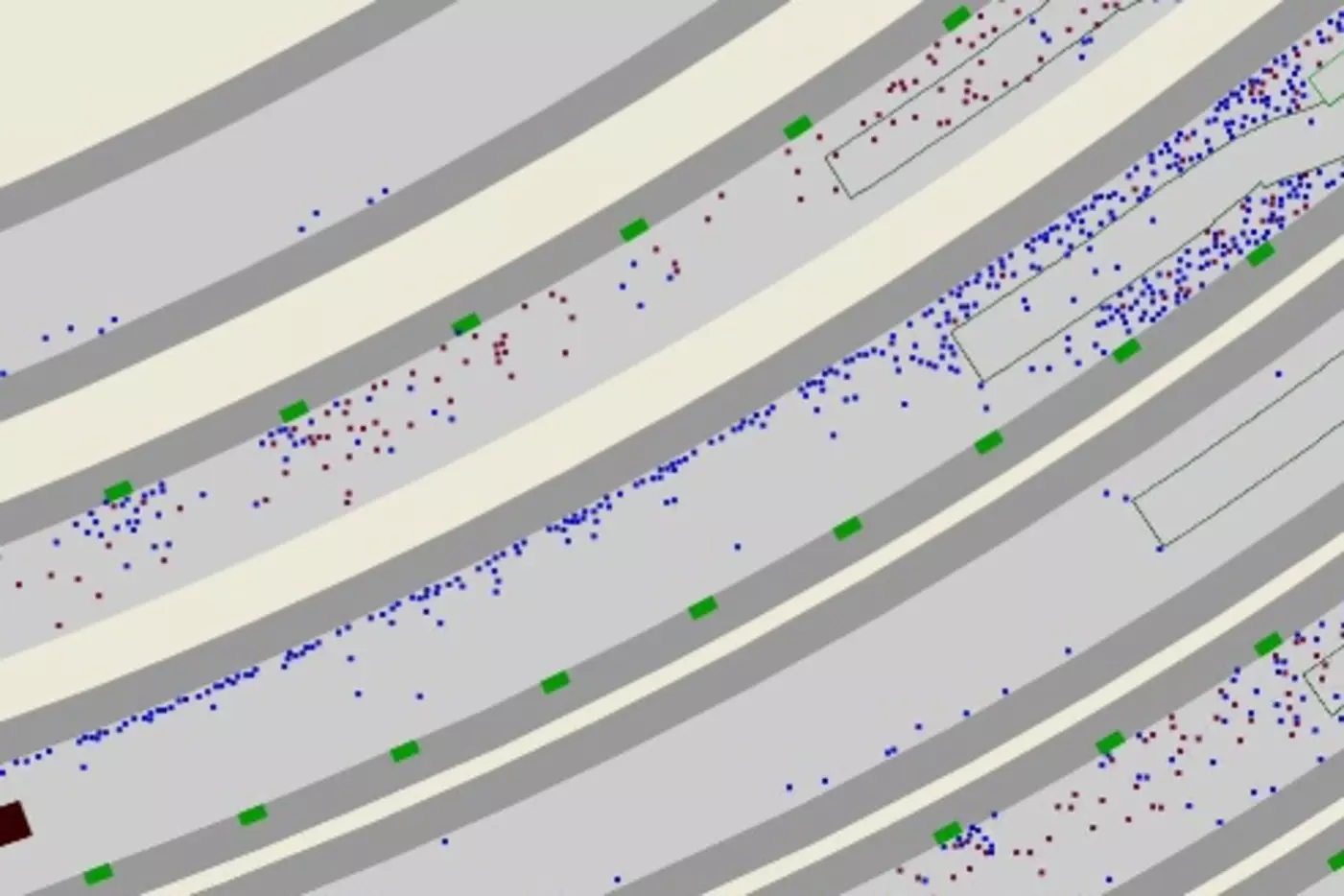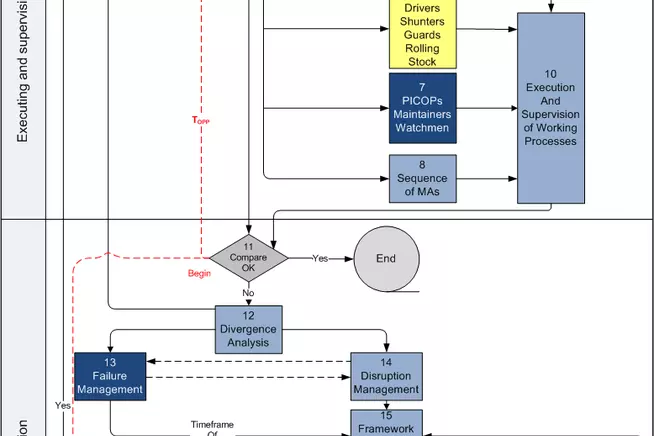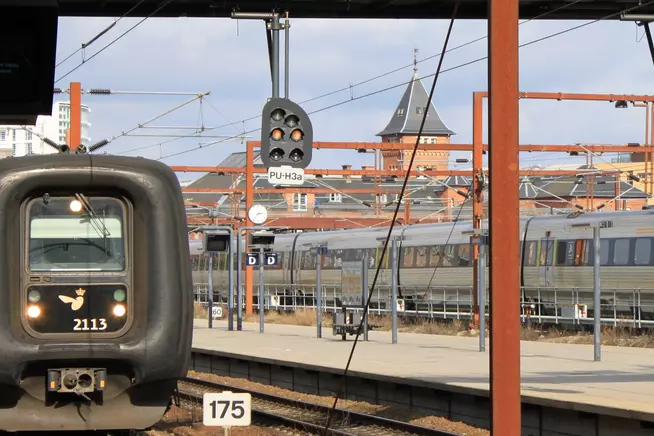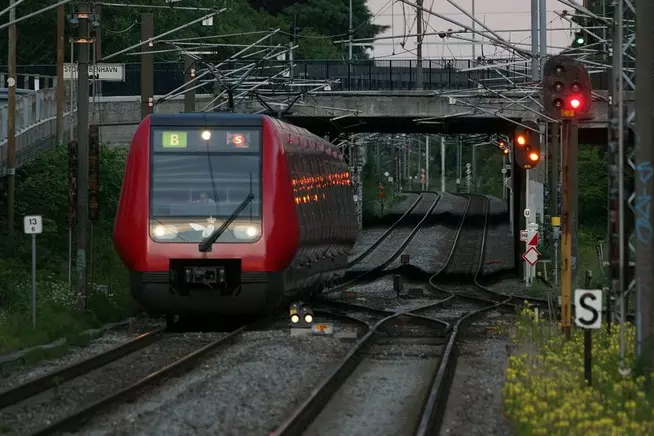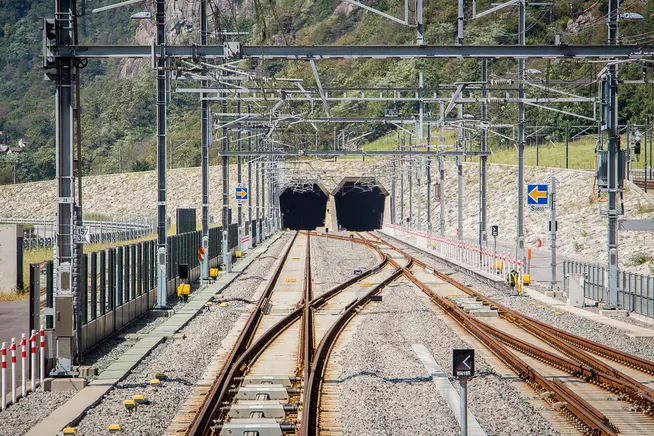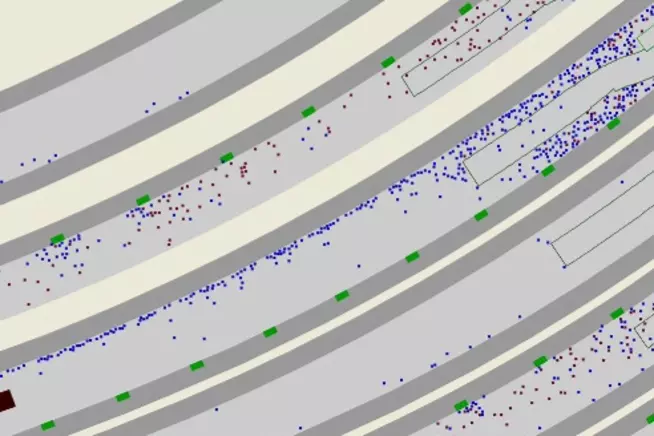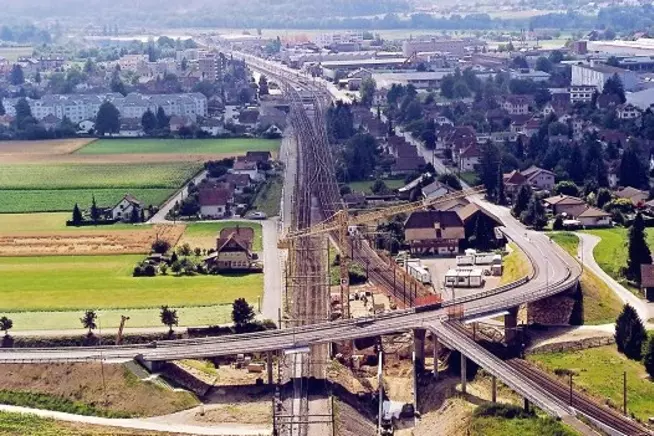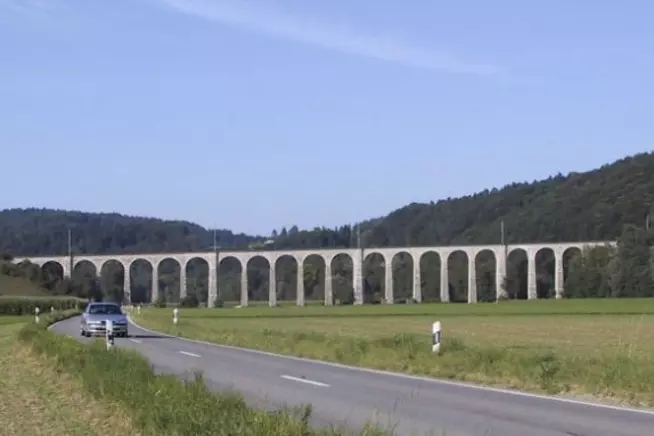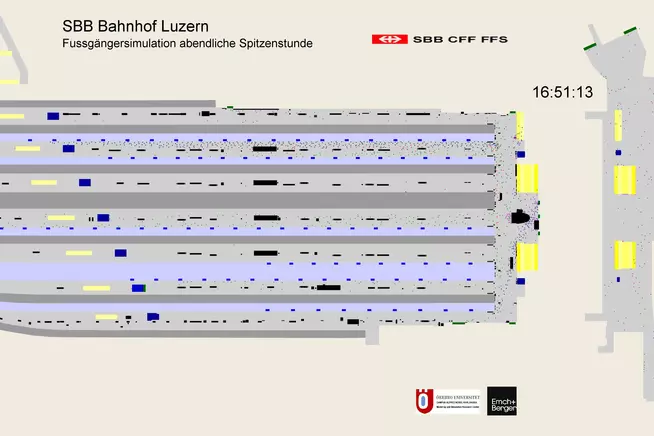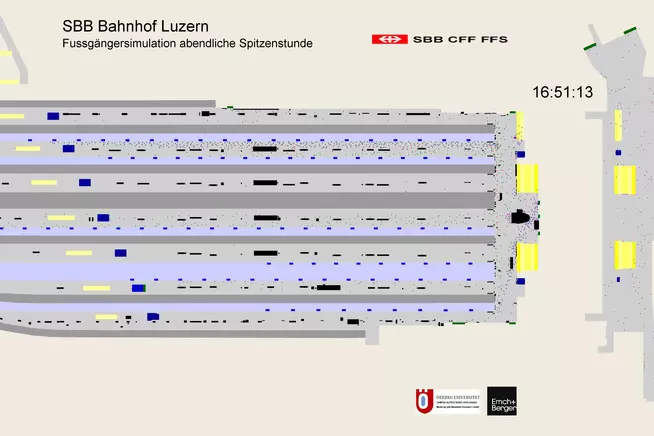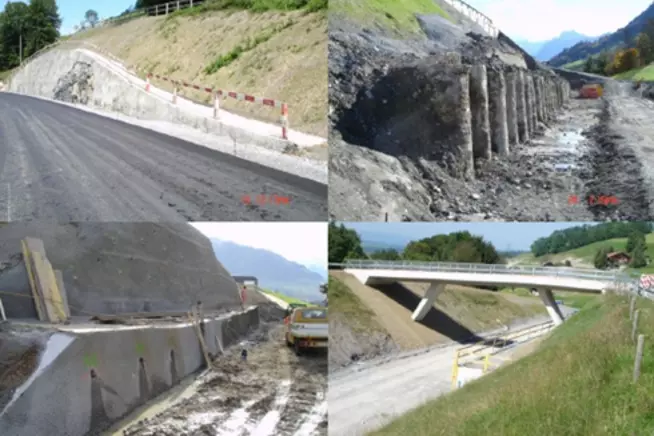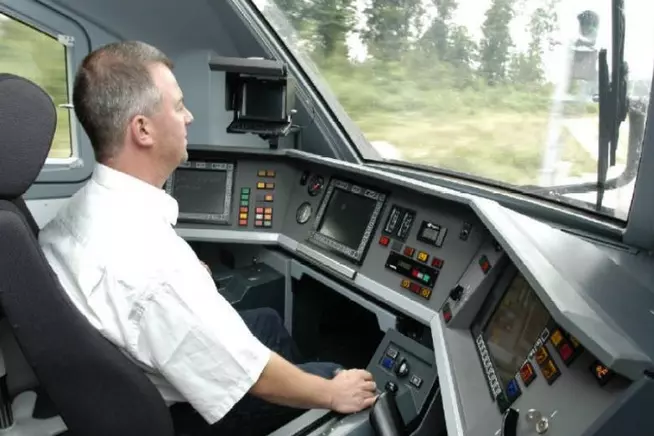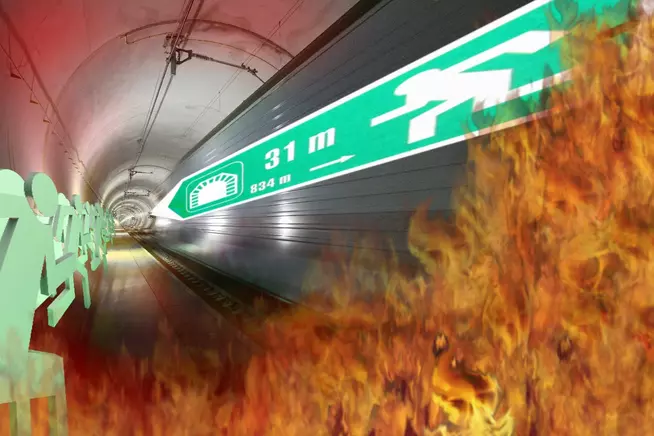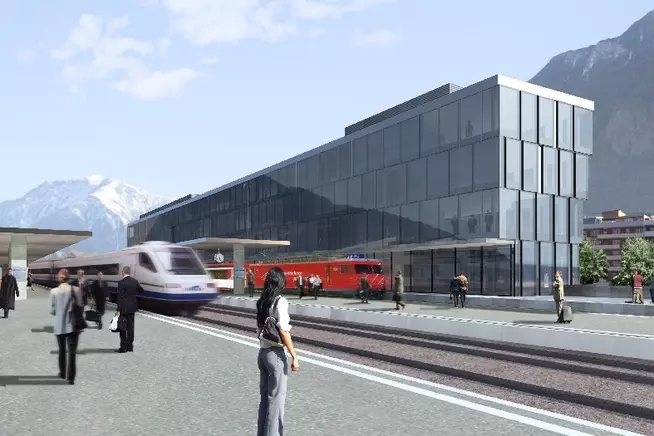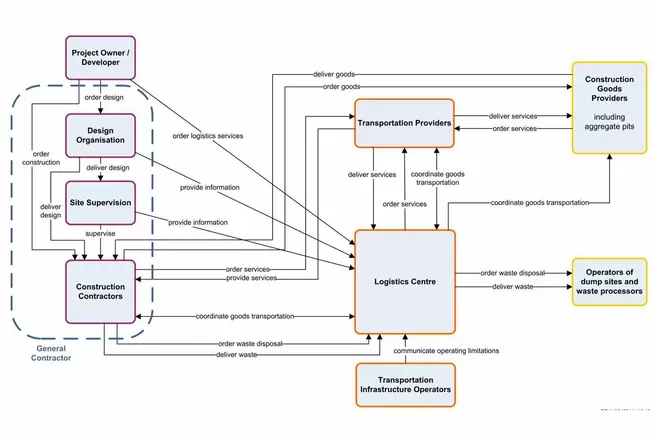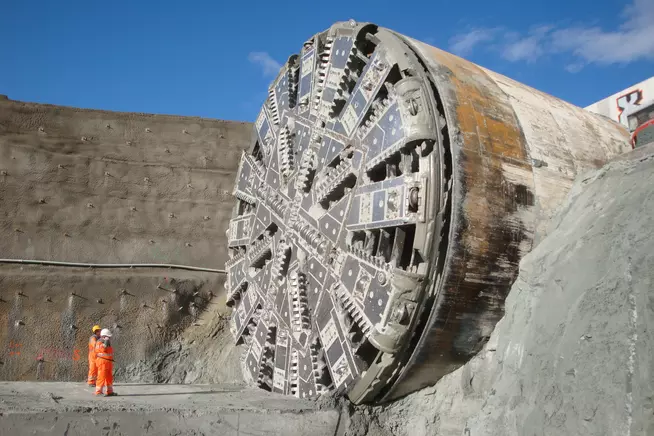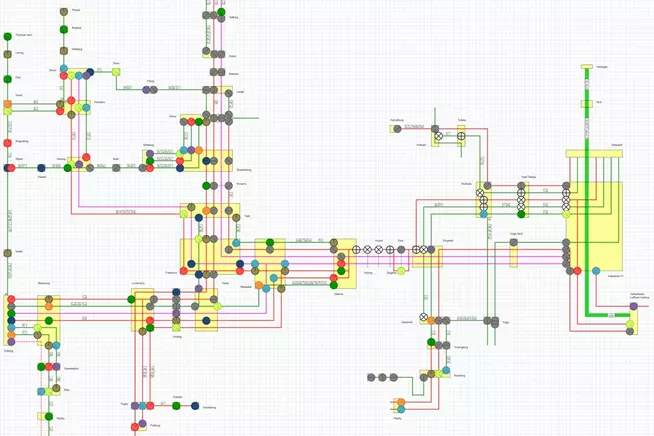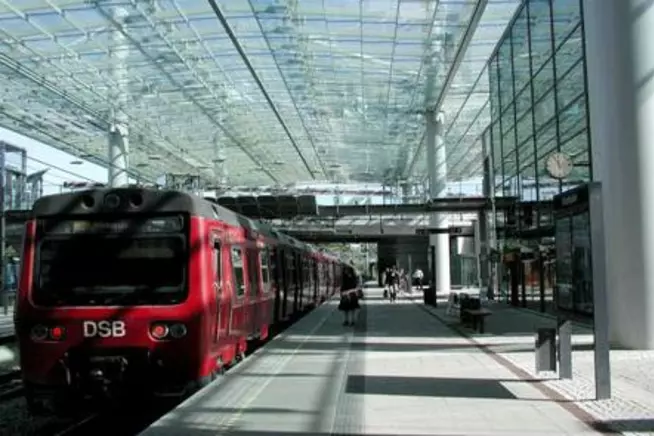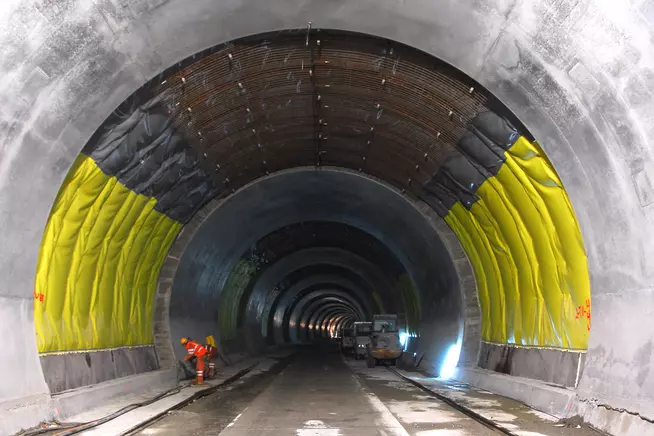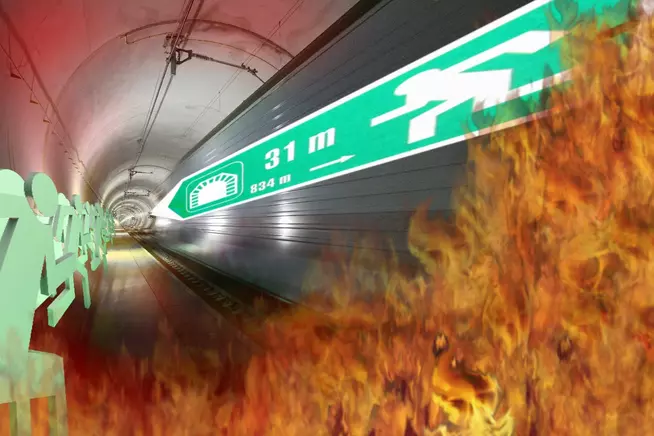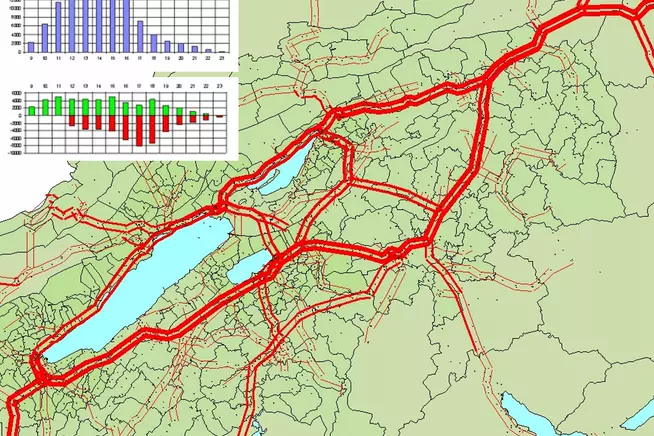Pedestrian Simulation SBB Station Berne
Modifications in the infrastructure or the operational processes of complex traffic systems and hubs like train stations or airports often lead to expected and unexpected changes in travel behaviour. To assess these changes and to evaluate changes in distances, travel times, transfer times etc. a multi-agent-simulation has been developed.
On the basis of current surveys, time-tables and reports a multi-agent-system consist different categories of agents. Each traveller is represented as a single agent and the real world is represented through a virtual world with resources and the agents. During the simulation the whole system is updated every second. Agents will update their attributes and communicate with each other and are able to read attributes from other agents or the world. Each agent has it’s own behaviour. Agents with similar behaviour are grouped but behaviour is randomly assigned with different standard deviations (derived from literature).
Complex situations as for example the SBB station Berne or Lucerne are simulated for the peak hour with more than 40’000 travellers. Also evacuation scenarios for an accident case of a TGV in a tunnel are simulated, including data of temperature and smoke (CO). Agents react on these environmental data with for example reducing speed, or changing direction, searching new destination or decease.
